Empirical Models for Agile Project Success
Explains how empirical Agile models improve project outcomes by increasing visibility, enabling change, reducing risk, and delivering value …
Explore and compare Agile frameworks. Understand their principles, applications, and impact on organisational agility and value delivery.


Agile frameworks are structured methodologies that facilitate the implementation of Agile principles within organisations, enabling teams to deliver value predictably and sustainably. These frameworks, such as Scrum, Kanban, and Lean, provide specific roles, events, and artefacts that guide teams in their work, fostering collaboration, transparency, and continuous improvement. By adopting an Agile framework, organisations can respond more effectively to changing market demands and customer needs, ensuring that they remain competitive and relevant.
The systemic nature of Agile frameworks encourages a culture of experimentation and learning, allowing teams to iterate on their processes and products. This adaptability is crucial for long-term success, as it empowers teams to identify inefficiencies and optimise workflows, ultimately enhancing value delivery. Agile frameworks also promote cross-functional collaboration, breaking down silos and enabling diverse skill sets to contribute to shared goals. This holistic approach not only improves team dynamics but also aligns organisational objectives with customer satisfaction, driving better outcomes.
By embedding Agile frameworks into their operations, organisations can cultivate an environment that prioritises responsiveness and innovation, ensuring they are well-equipped to navigate the complexities of modern product development and market dynamics. The focus on continuous delivery and improvement fosters resilience, enabling teams to thrive in an ever-evolving landscape.
Explains how empirical Agile models improve project outcomes by increasing visibility, enabling change, reducing risk, and delivering value …
Learn how Agile coaches can empower teams by staying framework-agnostic, focusing on core principles, and enabling teams to choose and adapt practices …
Learn how to spot fake Agile practices using six key questions from the US Department of Defense, and discover steps to assess and improve true Agile …
Learn how to move from traditional project management to Kanban, including steps, benefits, and tips for a smooth, gradual transition to Agile …
Explains why a clear Definition of Done is vital in Agile and Scrum for quality delivery, transparency, and risk mitigation, with tips for team …
Explores how applying 'less is more' in Agile boosts productivity and quality by focusing on high-value tasks, reducing waste, and streamlining team …
Explains why delivering working software to users every iteration is vital in Agile, highlighting feedback, value, and practical steps for continuous …
Explains how Scrum Masters and Agile coaches boost team motivation by setting clear goals, fostering engagement, recognising achievements, and …
Guidance for new scrum teams on establishing effective practices, learning from experience, experimenting, and improving during their first four weeks …
Identifies seven common Agile pitfalls, quick fixes, backlog overload, resource focus, lack of accountability, blame, imitation, and pride, and offers …
Immersive training helps experienced Scrum Masters deepen practical skills, boost team effectiveness, and develop leadership through hands-on, …
Most organisations fail to achieve Scrum’s promised benefits due to focusing on team processes over holistic, organisation-wide change and an agile …
Explores key qualities of an effective Scrum Master, focusing on team empowerment, backlog management, collaboration, and removing organisational …
Explores how immersive, collaborative learning methods in Scrum training enable ongoing support, real-world application, and lasting organisational …
Explains why Scrum events are not pointless meetings but structured opportunities for inspection, adaptation, and progress, clarifying common …
Explores common misconceptions about the Scrum Master role, highlighting the shift from tool admin to empowering leader who fosters team autonomy, …
Step-by-step guide for running a Sprint Review, including presenting the increment, gathering feedback, updating the backlog, forecasting, and …
The US Department of Defence now requires agile, iterative software development, ending mandatory waterfall methods and influencing global government …
Explores why Product Owners’ authority is accepted while Scrum Masters’ is questioned, highlighting the need for clear authority to ensure team …
Explains why relying on Agile burndown charts leads to over-planning and false progress, and advocates for minimal, adaptive planning and continuous …
Learn essential principles for effective Sprint planning in Agile, including understanding the product backlog, setting clear goals, and fostering …
A Scrum Master empowers teams by facilitating, mentoring, and supporting, not micromanaging, fostering trust, collaboration, and continuous …
Explains when an Applied Professional Scrum (APS) course benefits Scrum teams, helping them identify and remove ineffective practices to improve Agile …
Explains why a Scrum Master should facilitate and empower agile teams, not micromanage, highlighting the importance of trust, autonomy, and effective …
Learn how to plan and prioritise effectively in Scrum by aligning with business goals, assessing value and risk, and keeping a lean, focused product …
Explains the true responsibilities of a Scrum Master, how to maximise team effectiveness, teach Scrum principles, and address organisational …
Explores how silence in agile teams signals disengagement, and offers strategies to boost stakeholder participation, open communication, and effective …
Learn how Agile teams can handle harsh Sprint Review feedback by analysing root causes, engaging stakeholders, and deciding whether to halt, pivot, or …
Explains why the Product Owner should lead Sprint Reviews in Agile, detailing their role in maximising value, gathering feedback, and updating the …
Explores how Scrum Masters can expand their impact by embracing wider organisational responsibilities, challenging outdated practices, and fostering …
Empowering teams to adapt requirements based on user feedback is key to true agility. Learn why backlog updates and team engagement drive better, …
Explains how the Sprint Goal serves as an immediate tactical objective in Scrum, guiding teams toward strategic Product Goals and maximising value …
Explores practical strategies for scaling agile practices, key metrics, virtual training adaptations, and global insights to navigate change in the …
Discover the essential knowledge areas for Agile coaches, including frameworks, principles, technical skills, and practical steps to support and guide …
Explains how agile practices help teams manage complexity, adapt to change, and deliver value faster in modern product development, compared to …
Learn how to apply Kanban at the organisational level to optimise workflow, improve predictability, and make data-driven decisions across multiple …
Learn how to effectively apply Professional Scrum, overcome common implementation challenges, and improve team performance with practical agile …
Explores how lack of stakeholder feedback in Agile harms team morale and alignment, and offers practical ways to boost engagement and maintain …
Learn how Scrum teams can boost Sprint review success by engaging stakeholders, tailoring communication, and focusing on value, transparency, and …
Emphasises the importance of flexibility and pragmatism in Scrum, encouraging teams to adapt frameworks to their context rather than rigidly following …
Discover why experienced Scrum practitioners often misunderstand core principles, and how revisiting Scrum fundamentals restores clarity, agility, and …
Explains how the PSM II course focuses on developing advanced Scrum Master skills, facilitation techniques, and accountability, rather than just …
Outlines core Agile values and principles for software development, emphasising collaboration, adaptability, working software, customer focus, and …
Explores how openness and transparency in Scrum foster trust, clear communication, and a supportive team culture, essential for effective Agile …
Explains how adopting Kanban improves workflow, predictability, and transparency for any team or industry, offering practical insights and benefits …
Explains why effective planning is essential in Agile and Scrum, debunking myths about planning, and highlights strategies for teams of all sizes to …
Explains how Scrum supports customer acquisition and retention in competitive markets by enabling rapid delivery, feedback, and continuous …
Explains how to integrate Design Sprint activities within Scrum by embedding design and UX work into regular sprints and backlog refinement, avoiding …
Summary of a multi-team Professional Scrum training at DFDS Seaways in Immingham, UK, highlighting co-located learning, cross-team collaboration, and …
Explains burndown charts in Scrum, their purpose, common issues, and compares tracking by hours, story points, and acceptance tests to improve team …
Explains why the Agile Practitioner Series course is ideal for new Scrum teams, focusing on practical Scrum skills, organisational change, and team …
Explains the sprint goal in Scrum as a clear, tactical objective for each sprint, guiding team focus, enabling actionable feedback, and linking daily …
Examines whether the belief that Scrum can't scale is practical or defeatist, highlighting Nexus as a proven approach for scaling Scrum to deliver …
Explains how Kanban can be integrated with Scrum to improve workflow visibility, provide key metrics, and enable continuous improvement in agile …
Learn how Kanban practices can be integrated into Professional Scrum teams to improve workflow, transparency, and delivery using the new Scrum.org PSK …
Most people in scrum courses realise the true value of empiricism and purpose behind scrum’s events and artefacts, shifting from rote process to …
Explores how immersive, hands-on learning in Scrum boosts knowledge retention, practical skills, and continuous improvement compared to traditional …
Explains how setting and adjusting Work-In-Progress (WIP) limits in Kanban helps teams manage workflow, prevent bottlenecks, and improve productivity …
Learn essential Scrum Product Backlog management skills, including stakeholder engagement and data-driven decision-making, to boost team effectiveness …
New Scrum Masters should start by thoroughly reading the Scrum Guide to understand Scrum principles, roles, and practices, forming a strong foundation …
We partner with businesses across diverse industries, including finance, insurance, healthcare, pharmaceuticals, technology, engineering, transportation, hospitality, entertainment, legal, government, and military sectors.

Microsoft

Jack Links

Boeing

Freadom

Akaditi

ProgramUtvikling

Schlumberger

Ericson

Sage

Bistech

SuperControl

Emerson Process Management

Cognizant Microsoft Business Group (MBG)

Milliman

Flowmaster (a Mentor Graphics Company)

Big Data for Humans

Trayport

Teleplan

Royal Air Force

Nottingham County Council

Washington Department of Enterprise Services

New Hampshire Supreme Court

Ghana Police Service

Department of Work and Pensions (UK)

Flowmaster (a Mentor Graphics Company)

Illumina

Xceptor - Process and Data Automation

Sage

Jack Links

Higher Education Statistics Agency